Serving 591 students in grades 6-8, Lexington Middle School ranks in the bottom 50% of all schools in North Carolina for overall test scores (math proficiency is bottom 50%, and reading proficiency is bottom 50%).
The percentage of students achieving proficiency in math is 36% (which is lower than the North Carolina state average of 51%). The percentage of students achieving proficiency in reading/language arts is 39% (which is lower than the North Carolina state average of 50%).
The student:teacher ratio of 16:1 is higher than the North Carolina state level of 15:1.
Minority enrollment is 83% of the student body (majority Hispanic), which is higher than the North Carolina state average of 57% (majority Black and Hispanic).
Quick Stats (2025)
- Grades: 6-8
- Enrollment: 591 students
- Student:Teacher Ratio: 16:1
- Minority Enrollment: 83%
- Overall Testing Rank: Bottom 50% in NC
- Math Proficiency: 36% (Btm 50%)
- Reading Proficiency: 39% (Btm 50%)
- Science Proficiency: 71% (Top 50%)
- Source: National Center for Education Statistics (NCES), NC Dept. of Education
Top Rankings
Lexington Middle School ranks among the top 20% of public schools in North Carolina for:
Category
Attribute
Diversity
Percent Eligible For Free Lunch
School Overview
Lexington Middle School's student population of 591 students has declined by 19% over five school years.
The teacher population of 38 teachers has declined by 17% over five school years.
Grades Offered
Grades 6-8
Total Students
591 students

Gender %
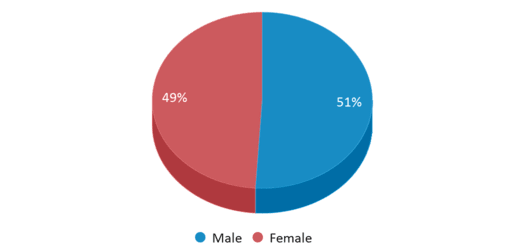
Total Classroom Teachers
38 teachers

Students by Grade
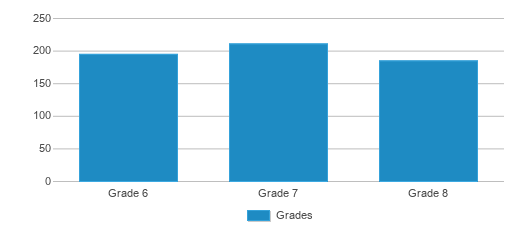
School Rankings
Lexington Middle School ranks within the bottom 50% of all 2,617 schools in North Carolina (based off of combined math and reading proficiency testing data).
The diversity score of Lexington Middle School is 0.71, which is equal to the diversity score at state average of 0.71. The school's diversity has stayed relatively flat over five school years.
Overall Testing Rank
#1917 out of 2617 schools
(Bottom 50%)
(Bottom 50%)
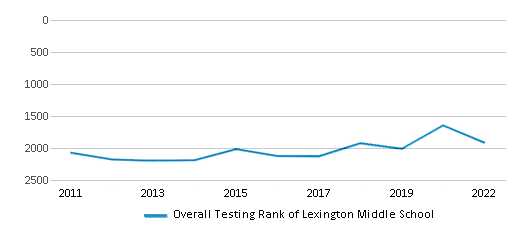
Math Test Scores (% Proficient)
36%
51%
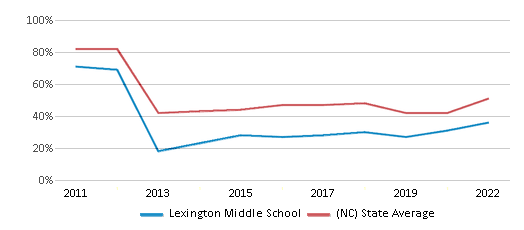
Reading/Language Arts Test Scores (% Proficient)
39%
50%
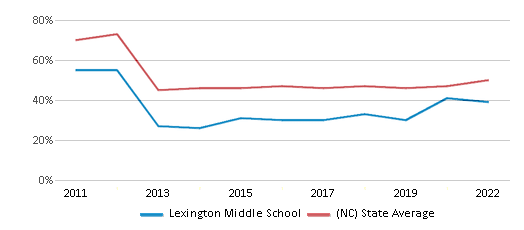
Science Test Scores (% Proficient)
71%
63%
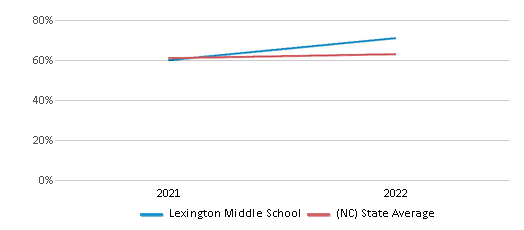
Student : Teacher Ratio
16:1
15:1
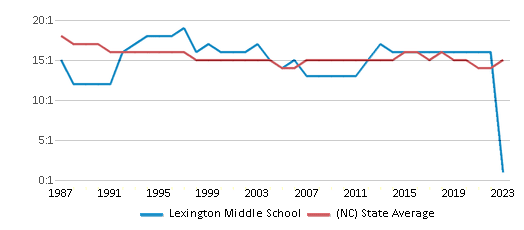
American Indian
n/a
1%

Asian
1%
4%
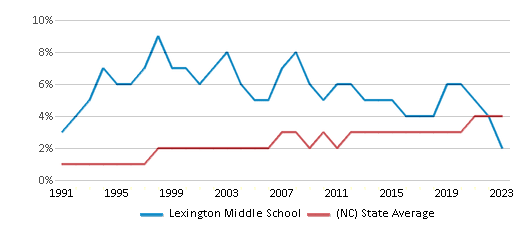
Hispanic
42%
21%
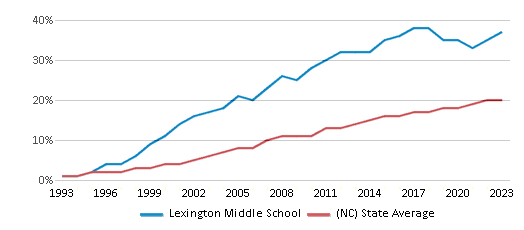
Black
29%
25%
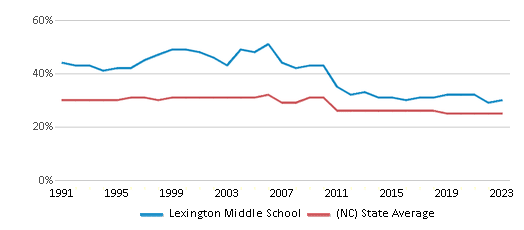
White
17%
43%
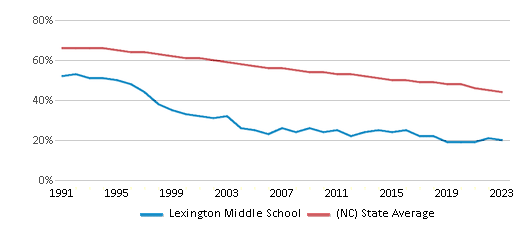
Hawaiian
n/a
n/a
Two or more races
11%
6%
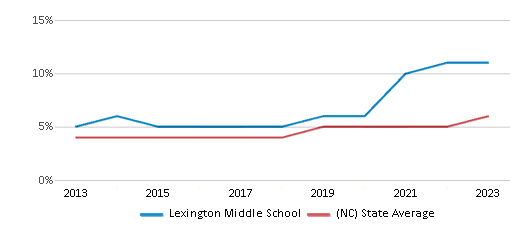
All Ethnic Groups
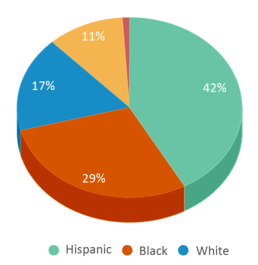
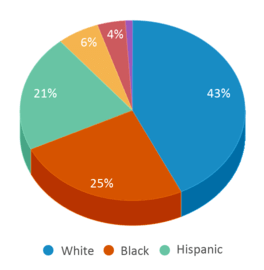
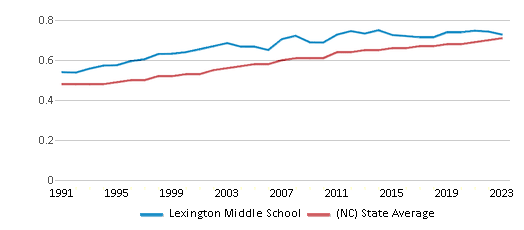
Participates in the National School Lunch Program (NSLP)
Yes
Eligible for Free Lunch
99%
68%
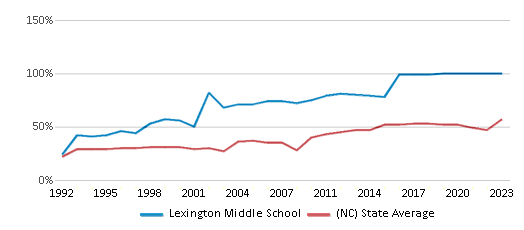
Eligible for Reduced Lunch (14-15)
8%
5%
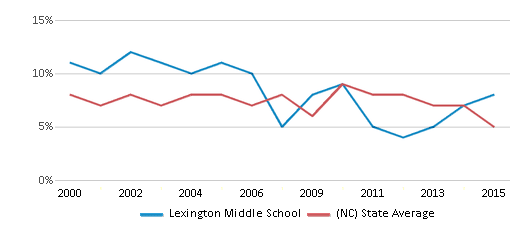
School Statewide Testing
School District Name
Source: National Center for Education Statistics (NCES), NC Dept. of Education
Profile last updated: 02/09/2025
Frequently Asked Questions
What is Lexington Middle School's ranking?
Lexington Middle School is ranked #1917 out of 2,617 schools, which ranks it among the bottom 50% of public schools in North Carolina.
What schools are Lexington Middle School often compared to?
Lexington Middle Schoolis often viewed alongside schools like South Asheboro Middle School, North Asheboro Middle School by visitors of our site.
What percent of students have achieved state testing proficiency in math and reading?
36% of students have achieved math proficiency (compared to the 51% NC state average), while 39% of students have achieved reading proficiency (compared to the 50% NC state average).
How many students attend Lexington Middle School?
591 students attend Lexington Middle School.
What is the racial composition of the student body?
42% of Lexington Middle School students are Hispanic, 29% of students are Black, 17% of students are White, 11% of students are Two or more races, and 1% of students are Asian.
What is the student:teacher ratio of Lexington Middle School?
Lexington Middle School has a student ration of 16:1, which is higher than the North Carolina state average of 15:1.
What grades does Lexington Middle School offer ?
Lexington Middle School offers enrollment in grades 6-8
What school district is Lexington Middle School part of?
Lexington Middle School is part of Lexington City Schools School District.
School Reviews
5 1/29/2020
If there are any current parents that want to get together for small projects at the school, I am asking the principle what is on his wish list for me to do. THe challenges of the school are real, but they can be solved by active participation from the community. This not only shows the kids people care, but the teachers and administration. The community can and should improve this school and turn it into a magnet for everyone. Not one single group, person, or committee can do that alone.
2 11/23/2009
This school is as close to a prison as a school can be. The staff are incredibly harsh and my daughter was yelled at because she dropped her books.
There's a camera in every hall, students have to walk and march in order as if it were a prison camp. Students aren't allowed to drink except at set time. My girlfriend has been banned from wearing most shirts because of her large bust.
If students make any mistakes in gym they force that student to do exercises specifically designed to leave the child sore for days to come, every day for at least a week, more than once my daughter has been reduced to tears in gym.
She has also been threatened with being paddled by one teacher, this is just unacceptable, I spank my daughter when need be, but I don't threaten to paddle her in front of her friends for little to no reason.
There is a boy I spoke to there who I know has been to Juvie, but he claims there's more freedom and it's more enjoyable in Juvie than this school.
I have taken my daughter out of schooling and she is being homeschooled now, I was stupid to ever let her come to this school.
Put simply this is the worst school I've ever seen. It's a prison, not a school
Review Lexington Middle School. Reviews should be a few sentences in length. Please include any comments on:
- Quality of academic programs, teachers, and facilities
- Availability of music, art, sports and other extracurricular activities
Recent Articles

What Is A Charter School?
Explore the world of charter schools in this comprehensive guide. Learn about their history, how they operate, and the pros and cons of this educational innovation. Discover key facts about charter schools, including admission policies, demographics, and funding, as well as what to look for when considering a charter school for your child.

10 Reasons Why High School Sports Benefit Students
Discover the 10 compelling reasons why high school sports are beneficial for students. This comprehensive article explores how athletics enhance academic performance, foster personal growth, and develop crucial life skills. From improved fitness and time management to leadership development and community representation, learn why participating in high school sports can be a game-changer for students' overall success and well-being.

February 05, 2025
Understanding the U.S. Department of Education: Structure, Impact, and EvolutionWe explore how the Department of Education shapes American education, from its cabinet-level leadership to its impact on millions of students, written for general audiences seeking clarity on this vital institution.





